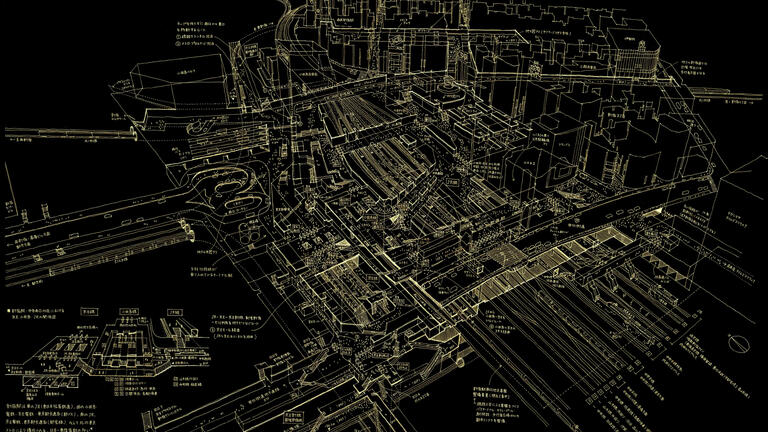Infrastructural Landscapes II: Design Futures
Part II of this seminar course focuses on the intersections of infrastructural theory and architectural world-making. Students will explore how infrastructures — understood as the material, technical and social systems of connectivity and relationality that establish the foundation for other forms of power to operate — are woven through space and sedimented in overlapping temporal layers.

Tomoyuki Tanaka: Dismantling of Shinjuku Station (inverted).
Part II of this seminar course focuses on the intersections of infrastructural theory and architectural world-making. Students will explore how infrastructures — understood as the material, technical and social systems of connectivity and relationality that establish the foundation for other forms of power to operate — are woven through space and sedimented in overlapping temporal layers. Together we research how infrastructures like energy grids, flood management systems, and digital communications networks facilitate place-making by connecting (or disconnecting) people and resources across vast spatial distances. We explore the thinkers who show the many ways infrastructures undergird contemporary spatial politics and shape struggles for a just and sustainable future.